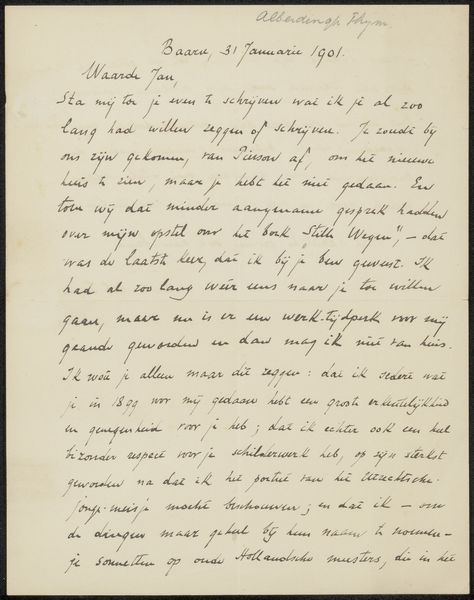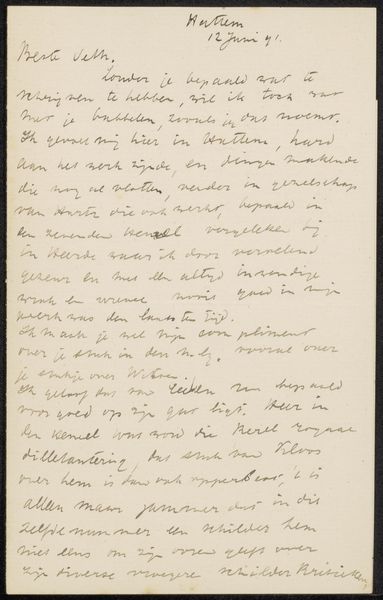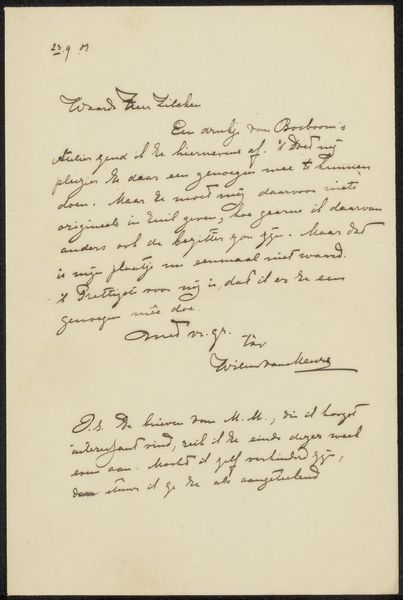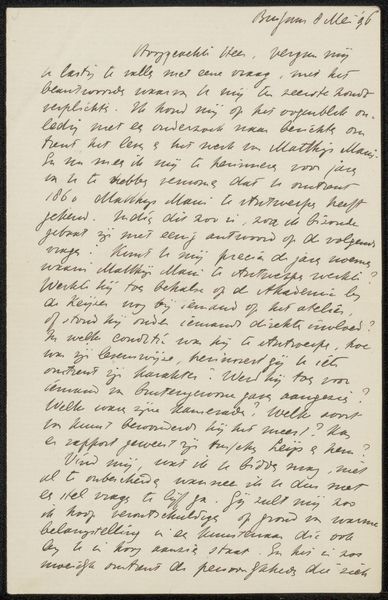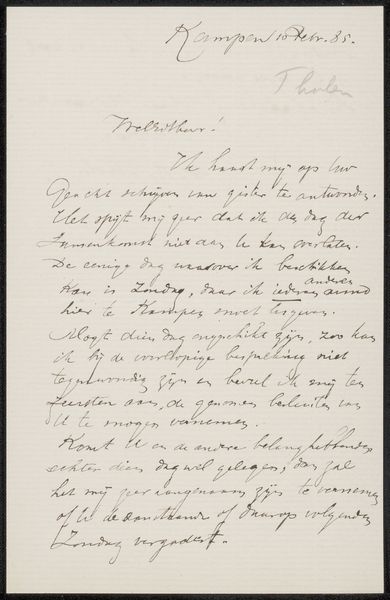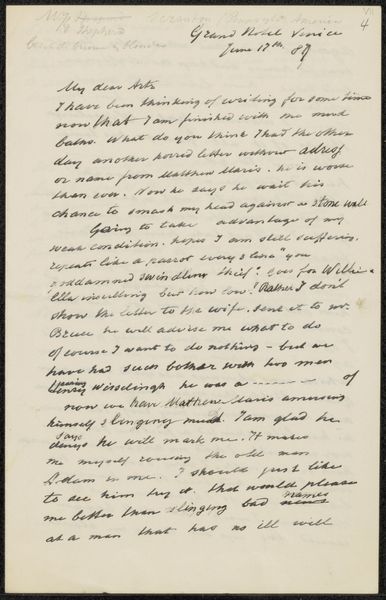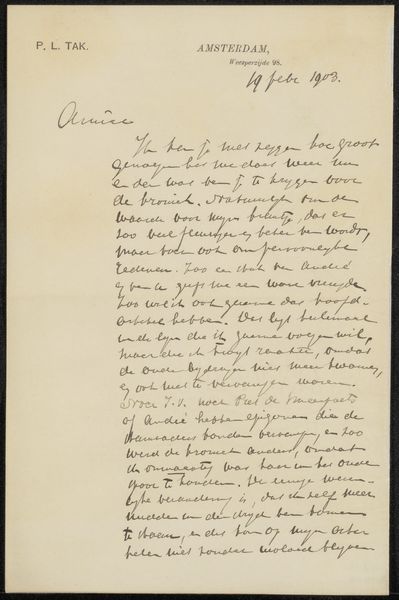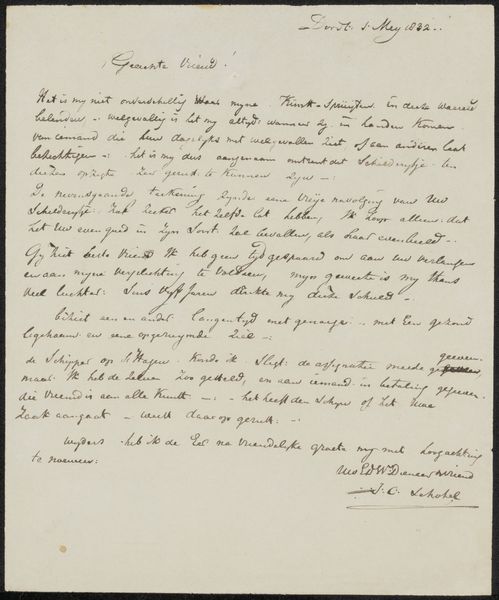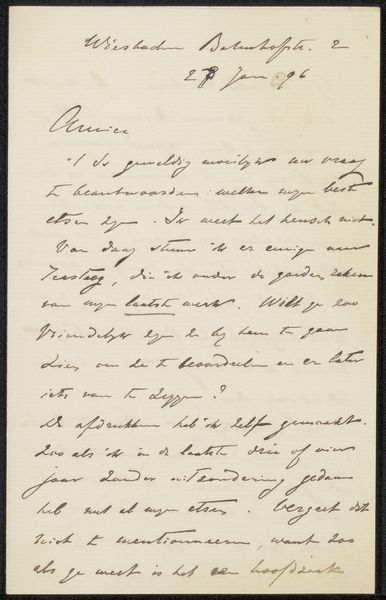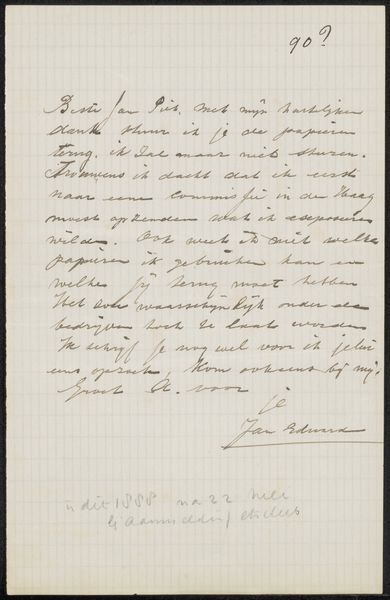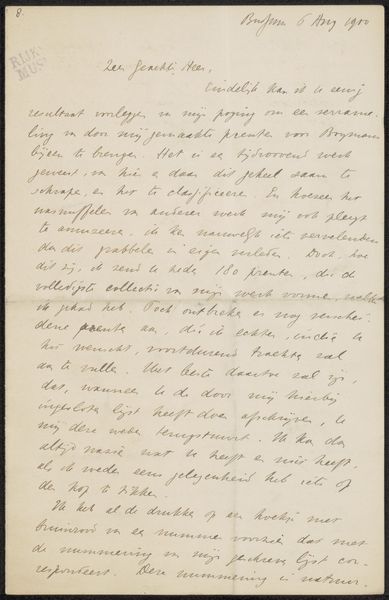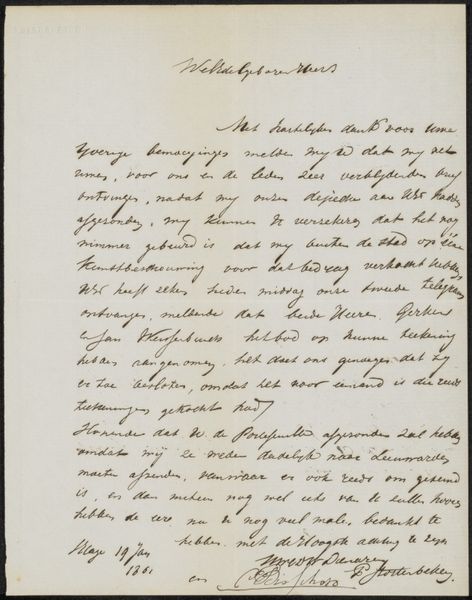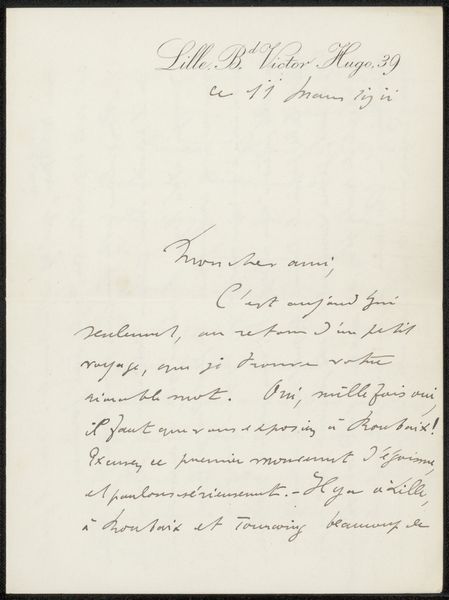
drawing, paper, ink, pen
#
drawing
#
dutch-golden-age
#
hand drawn type
#
paper
#
ink
#
pen work
#
symbolism
#
pen
Copyright: Rijks Museum: Open Domain
Editor: So, this is "Brief aan Philip Zilcken" by Jan Toorop, potentially created between 1902 and 1904. It's ink on paper, a drawing held in the Rijksmuseum. I find the intimacy of a handwritten letter striking. What does this artwork reveal to you? Curator: Letters like these are revealing socio-historical artifacts, beyond their immediate message. Who was Zilcken, and what role did he play in Toorop’s artistic circle? Letters help art historians understand patronage, artistic networks, and the economics of art at the time. How do these exchanges shape what art gets produced and how it circulates? Editor: Interesting. So you are thinking about how Toorop, who is often associated with symbolism, fits into the broader art world of his time through these kinds of exchanges? Curator: Precisely. Toorop mentioning work for the Amsterdam Stock Exchange – “de N. Beurs austertom” – signals a negotiation of artistic identity versus commercial demands. Letters let us see artists’ lives outside the canvas, juggling commissions, dealing with patrons, and shaping their own image in public. Does seeing it this way change your perspective? Editor: Yes, it provides a glimpse into the artist's daily life. It's fascinating to see art and business intertwined. It adds a layer to understanding not only Toorop's work but the cultural landscape that influenced him. I wouldn't have considered that without your insight. Curator: These handwritten exchanges are invaluable to me. They show the practical and political realities that informed art creation during that era. It’s about the social fabric as much as individual genius. Editor: That really changes how I see this simple letter; it's a valuable document for understanding artistic production within a specific socio-economic setting.
Comments
No comments
Be the first to comment and join the conversation on the ultimate creative platform.
